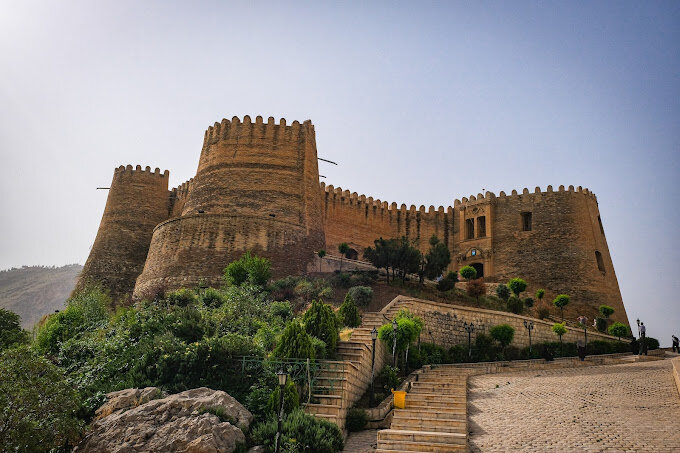Iran eyes UNESCO tag for its Sassanid fortress

TEHRAN – Iran has completed an all-inclusive dossier for its Qale Falak-ol-Aflak, which is a Sassanid era (224–651) fortress located in Khorramabad, the capital of Lorestan province, in a bid to nominate it for UNESCO status, the tourism minister has said.
As a symbol of Iranian history, culture, and civilization, the castle is being prepared for possible inclusion in UNESCO’s prestigious list, said Ezzatollah Zarghami on Friday, while visiting the historical structure.
A major obstacle to the registration of this ancient castle was that parts of it were at the disposal of the armed forces in recent years, the minister added.
However, the issue was overcome by the governor of Lorestan and by the parliamentarians, and the armed forces will be transferred to another location in the near future, he explained.
In December, President Ebrahim Raisi paid a visit to the ancient fortress. He was accompanied by members of his cabinet, including the Energy Minister, Industry, Mining, and Trade Minister, Agriculture Minister, Culture Minister as well as Cooperatives, and Labor and Social Welfare Minister.
The unmissable eight-towered fortress dominates Khorramabad as one of the most visited travel destinations in the region for both domestic and foreign sightseers. The fortress seems particularly imposing and dramatic when floodlit at night, offering picturesque views of its encircling crenelated battlements.
Experts believe that the fortress is comparable with similar works in Naqsh-e Rostam, Naqsh-e Rajab, Tape Chugan, and Firuzabad in Fars province.
In 2018, UNESCO added an ensemble of Sassanian historical cities in southern Iran -- titled “Sassanid Archaeological Landscape of Fars Region”-- to its World Heritage list. The ensemble is comprised of eight archaeological sites situated in three geographical parts of Firuzabad, Bishapur, and Sarvestan. It reflects the optimized utilization of natural topography and bears witness to the influence of Achaemenid and Parthian cultural traditions and of Roman art, which later had a significant impact on the architecture and artistic styles of the Islamic era.
The Sassanid era is of very high importance in the history of Iran. Under Sassanids, Persian art and architecture experienced a general renaissance. Architecture often took grandiose proportions such as palaces at Ctesiphon, Firuzabad, and Sarvestan which are amongst the highlights of the ensemble. Crafts such as metalwork and gem engraving grew highly sophisticated, yet scholarship was encouraged by the state. In those years, works from both the East and West were translated into Pahlavi, the language of the Sassanians.
Efforts made by the Sassanids also yield a revival of Iranian nationalism took place, for example, Zoroastrianism was declared the state religion. The dynasty evolved by Ardashir I and was destroyed by the Arabs during the period 637 to 651. The dynasty was named after Sasan, an ancestor of Ardashir I.
Under his leadership who reigned from 224 to 241, the Sassanians overthrew the Parthians and created an empire that was constantly changing in size as it reacted to Rome and Byzantium to the west and the Kushans and Hephthalites to the east, according to Britannica Encyclopedia. At the time of Shapur I (reigned 241 CE–272), the empire stretched from Sogdiana and Iberia (Georgia) in the north to the Mazun region of Arabia in the south; in the east, it extended to the Indus River and the west to the upper Tigris and Euphrates river valleys.
Soaked in history and culture, Lorestan is one of the lesser-known travel destinations in Iran, which mainly acts as a gateway to the sweltering plains below in the adjoining Khuzestan province. Lorestan is also a region of raw beauty that an avid nature lover could spend weeks exploring.
The region was inhabited by Iranian Indo-European peoples, including the Medes, c. 1000 BC. Cimmerians and Scythians intermittently ruled the region from about 700 to 625 BC.
Lorestan was incorporated into the growing Achaemenid Empire in about 540 BC and successively was part of the Seleucid, Parthian, and Sassanid dynasties.
ABU/MG
